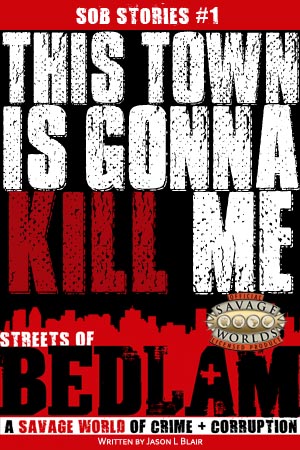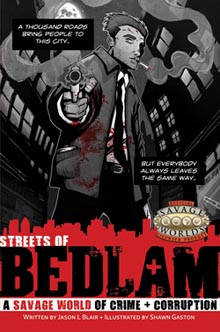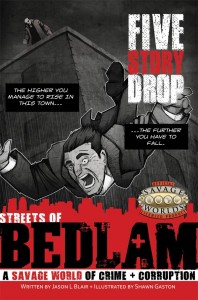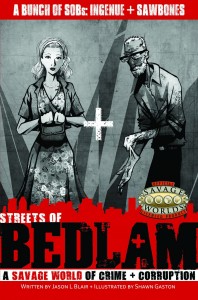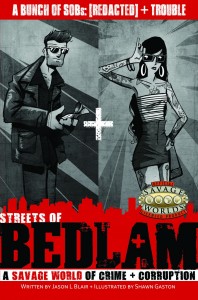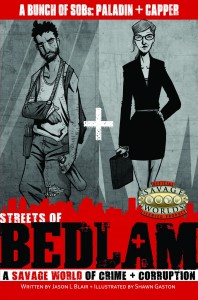The Districts: Bricktown
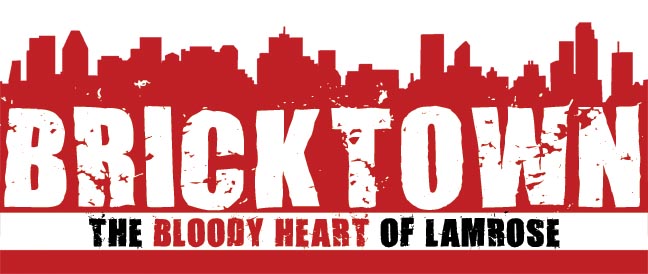
Two cities make up the area colloquially known as Bedlam: Bedford and Lamrose. A man-made river splits the two cities with the poorer half, the one that was eventually assumed by its richer cousin, residing on the southeastern banks. Lamrose began as a city of the future, built on the burgeoning steel industry and automotive possibilities that withered on the vine before all the jobs were shipped off to countries with more lax labor laws and a cheaper workforce. The collapse of its economic infrastructure left Lamrose vulnerable to predatory development, causing much of it to fall into decline. Those who remember might compare the darker parts of Lamrose to the Times Square of the 70s and 80s or the less desirable areas of modern Detroit.
But the heyday of Lamrose is not entirely forgotten. Fossils of failed reconstruction can be unearthed throughout the city’s many districts but the oldest remnants are found in the part of the city that existed before the city: the nine square blocks known as Bricktown.
The district gets its name primarily from its brick-paved streets but also the many red- and brown-faced buildings that stand in its heart. Bricktown was built on the remains of the original settlement and predates the districts of the outgrowth by over a century. The land beneath the bricks didn’t see development before a group of industrious entrepreneurs realized it fell in line with other manufacturing centers in the area, providing them with an eager, pre-existing workforce. So Bricktown grew, and Lamrose from it, until a city proper sprung from its seeds. Incorporated in the 1930s, Lamrose was formally founded with the district now known as Bricktown serving as a Philadelphia to the new city center’s District of Columbia. Lamrose attracted a lot of development, laying down a bedrock of industry that served the area well for decades to come. By the time the Summer of Love rolled around, Lamrose was fulfilling its promise as a city of the future.
Bricktown initially survived gentrification due to a half-hearted attempted to treat the original city site as a sort-of landmark but eventually it became too far left behind for any nominal amount of investment to pay off. From a budgetary standpoint, it made more sense to let Bricktown decay while funneling cashflow to the parts of the city that look good from the waterfront and on postcards (whatever amount of cashflow was left after filling the pockets of the city councilfolk and crooked contractors, that is).
As the district was left to its devices, the local criminal enterprises looking for a base of operations moved into the mostly-ignored area of Bricktown. As years passed, more and more vice moved in growing this once-unassuming square of post-war architecture into a thriving den of iniquity. Prostitution and the drug trade became Bricktown’s primary contributions to local economy which allowed criminal mini-empires to rise and infect all of Lamrose.
While the municipal leaders were profiting off Lamrose and quietly selling off its assets (which led to its eventual assumption by Bedford), the denizens of the districts were coming to terms with the fact they were on their own. The majority of the citizenry felt helpless, seeing it as easier to pack up and move away than try to fix their home city’s issues from within, leaving pockets for more infection to root and fester.
But a certain portion of the population didn’t move and refused to surrender: the working girls (and boys) of Bricktown. As police patrolling and protection dwindled, unscrupulous men forcefully took over the district’s sex trade—beating and doping the workers into submission while strongarming every last drop of profit. The world’s oldest profession quickly twisted into the world’s second oldest crime, leaving the professionals to look out for themselves.
Which they did.
While the woman called Queenie is generally regarded as the instigator of this revolution, nothing would have changed if the call to arms hadn’t been answered by a group. The working girls (and boys) of Bricktown rose up and beat back the pushers and pimps who had kept them down for so long. A war raged on the streets and many were left broken and beaten in its wake. The bodies were never recovered by either side. When the dust settled and the blood congealed, the working girls (and boys) stood victorious over their oppressors.
But Queenie knew it was only a matter of time before the pushers and pimps regrouped, stronger than ever. So she set about training her army, turning this gang of streetgirls and funboys into a band of vigilantes called Valkyries. Along with this honing of skills came a broadening of focus. The Valkyries quickly expanded their protected land to include all the districts of Lamrose. Slowly, but steadily, they are turning the tide of corruption in the Poor City. While Bricktown is a far shot from an amusement park, it is a safer area to ply one’s trade than it had been ten years prior.
Bricktown is Valkyrie HQ, where Queenie and her select cadre run the show. Though few question her, Queenie is not a dictator. The simple fact is she usually knows best and all but the greenest recruits know better than to refute her orders without having a damned good counter-argument.
